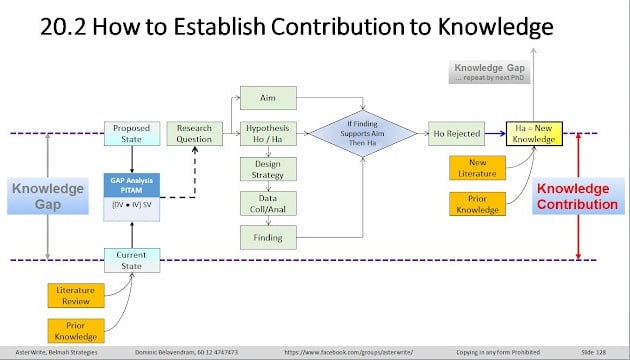What is Contribution to Knowledge?
To many, it is some aspects of literature review, conceptual model, data analysis techniques, etc. But no, not at all.
Dr. Nic
5/1/20241 min read


Contribution to Knowledge is explained as follows: You conduct a literature review by reading related, relevant documents. As you read, you extract excerpts that are relevant to your study. As key ideas develop you make a mind map depicting the relationships between the ideas (or items). Excerpts from your literature review are tagged against one or more of these items. Yes, the items and extracts have to be developed interactively. Then, for each item you need to evaluate the gap by consider the PICOS (Population, Intervention, Comparison, Outcome and Setting) or the PITAM (Procedure, Intervention, Theory, Analysis and Methodology) gap evaluation items or indeed you can make your own gap evaluation items. Additionally, you need to mark the item as a DV (Dependent Variable), IV (Independent Variable) or SV (Scope Variable).
Establishing Contribution to Knowledge
From the gap analysis, you select a pertinent set of GAP{DV, IV and SV} to create a Research Question that would ask a question required in your theoretical framework derived from the conceptual framework. The answer to this question is tied to the Ho (Null hypothesis) and Ha (Alternate hypothesis) of the research question. Only Ha can be a legitimate answer. And yes, Ha is a Contribution to Knowledge.
Why struggle?
To get around all these bends, turns and twists, there is AsterWrite. Google AsterWrite for all media and information. It makes thesis writing easier, faster and better. For more information on AsterWrite join out AsterWrite Group.


